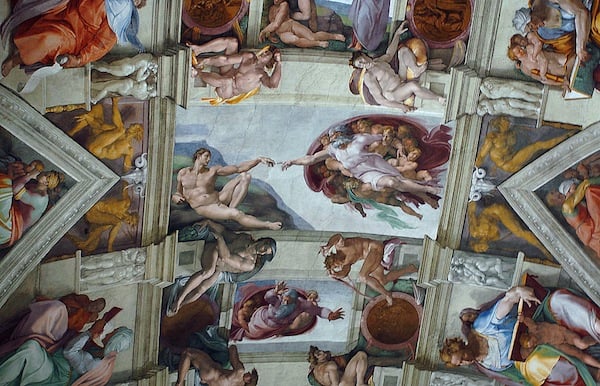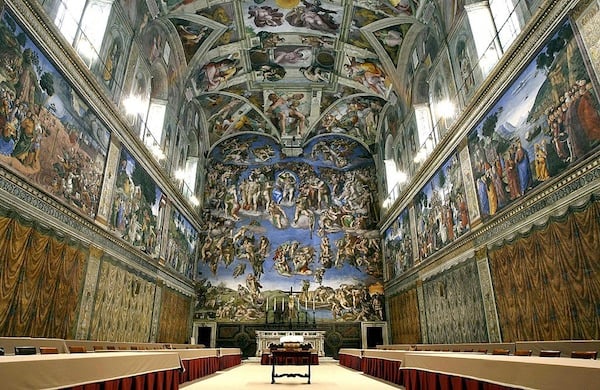Art World
Did Michelangelo Hide Feminist Symbols in the Sistine Chapel?
Certain motifs may refer to the female reproductive system, new research suggests.

Certain motifs may refer to the female reproductive system, new research suggests.

While it’s estimated that only around 30 women live in Vatican City, it’s possible that the ecclesiastical state’s most popular art attraction is filled with hidden blasphemies and feminist symbols.
A team of Human Anatomy researchers at the Federal University of Health Sciences in Porto Alegre, Brazil, made the claims, as the Daily Mail reports. The researchers published an article, “The hidden symbols of the female anatomy in Michelangelo Buonarroti’s ceiling in the Sistine Chapel,” in the peer-reviewed journal Clinical Anatomy in August.
They forward the theory that Michelangelo often hid “sexual innuendos and rude insults to patrons without them being aware,” and that the male-dominated Catholic church conflicted with the artist’s Greco-Roman-influenced, feminist beliefs.
Specific imagery, like eight ram skulls dotted around the ceiling, could refer to the female reproductive system, the researchers claim, and a series of downward-facing triangles could refer to the same. Women dominate certain triangular scenes as well, leading the researchers to further believe that Michelangelo was secretly rooting for women. But triangles, besides pointing in the direction of women, are also basic geometric symbols—and Renaissance artists were obsessed with geometry.

The interior of the Sistine Chapel. Photo: PIERPAOLO CITO/AFP/Getty Images.
While an art history professor would tell you that Michelangelo’s muscular female forms were the result of the artist only ever studying the bodies of male models—therefore having to tack on breasts and long hair and hope for the best—this new theory posits that muscular women were Michelangelo’s attempt to paint female strength.
In any case, there’s at least one Sistine Chapel with stated feminist intentions, although it doesn’t come from the Renaissance. In 1978, Ilise Greenstein and a group of twelve collaborating female artists created The Sister Chapel. It features a depiction of God with a female bodily form, alongside portraits of other powerful women of history such as Joan of Arc, Frida Kahlo, and US representative Bella Abzug.